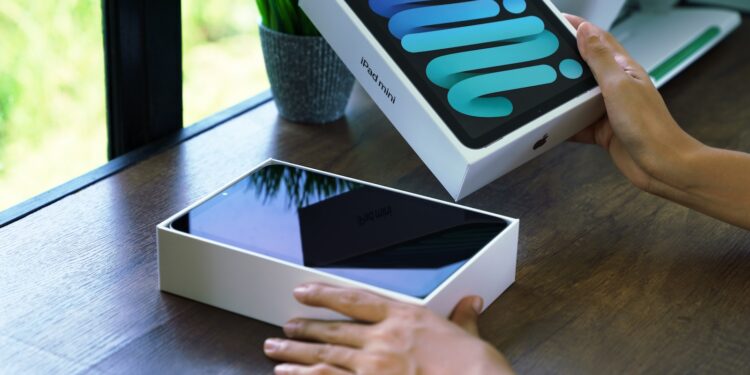Buying an iPad used to be a simple decision. There was one model, and that was it. Today, things are different. Apple offers four different iPad models, each with its own strengths, price points, and target audiences. Add to that accessories like the Apple Pencil and Magic Keyboard, and various display sizes and chips. It's no wonder many people don't know which iPad is right for them.
Apple itself certainly has an idea of who should use which iPad. Even if the company doesn't always say so directly, it's clear what the lineup means. Official communication is sometimes vague or overly promotional. When trying to find a suitable iPad, it helps to know the actual differences and correctly interpret Apple's statements.
iPad (11th generation): The standard model for everyday use
Apple describes the 11th-generation iPad as "adorable, drawable, magical." It's aimed at casual users and people looking for a simple, solid tablet for typical everyday tasks, such as streaming, browsing, FaceTime, homework, or note-taking with the first-generation Apple Pencil. It features an 11-inch Liquid Retina display with sRGB color and True Tone, an A16 Bionic chip, a 12 MP wide-angle rear camera, and a 12 MP ultrawide-angle front camera in landscape orientation. The first-generation Apple Pencil is supported, as is the Magic Keyboard Folio. USB-C is also included.
- Important to know: Apple Intelligence is not supported. If you can live without it, you'll get a good overall package at the entry-level price. The standard storage is 128 GB, which is significantly better than the previous 64 GB. However, for larger app and media collections, 256 GB is recommended. If you work extensively with iCloud, 128 GB will be fine.
- (The starting price is 379 euros – via Amazon)
iPad Air (M3): Powerful, but lighter than a Mac
The iPad Air is Apple's proposal for users who want more power but don't need a Pro model. It features the M3 chip, supports Apple Intelligence, and is available in two sizes: 11 and 13 inches. Both feature a Liquid Retina display with P3 Wide Color, True Tone, and an anti-reflective coating. It offers the same camera setup as the standard iPad, but with increased performance for more demanding apps and workflows. The iPad Air is compatible with Apple Pencil Pro and the Magic Keyboard for iPad Air.
- What stands out: The 13-inch model weighs more than the iPad Pro of the same size. It weighs 1.36 pounds, while the iPad Pro weighs just 1.28 pounds. In terms of performance, the Air is already capable of handling many professional tasks, such as photo editing or video editing with Final Cut. If you want a powerful iPad but don't want to pay the price of the Pro, this is the right choice.
- (The starting price is 639 euros – via Amazon)
iPad Pro (M4): For professionals with high demands
The iPad Pro is clearly aimed at professional users. It's the most expensive model in the lineup, starting at €1,199, but it also offers the most powerful hardware. The new M4 chip supports Apple Intelligence and is especially designed for multi-threading, 8K video editing, and other compute-intensive tasks. The display is an Ultra Retina XDR display with ProMotion, P3 Wide Color, True Tone, and anti-reflective coating. The 1TB and 2TB versions also offer the option of nano-textured glass. The device is extremely thin—just 5.1 millimeters—and, like the Air model, supports the Apple Pencil Pro and the Magic Keyboard for iPad Pro. The Pro model also stands out in terms of ports: It can transfer data at up to 40 Gb/s and drive external displays with up to 6K resolution.
- For you this means: If you're not sure why you need so much power, you probably don't need the iPad Pro. It's designed for people who already know they want to regularly complete complex projects on the iPad.
- (The starting price is 1,067 euros – via Amazon)
iPad mini: Small, mobile and surprisingly powerful
The iPad mini is the most compact model, but has similar features to its larger siblings. It has an 8.3-inch Liquid Retina display with P3 Wide Color, True Tone, and anti-reflective coating. It houses an A17 Pro chip with Apple Intelligence support. The camera is identical to that of the other models: a 12 MP rear camera and a 12 MP front camera with Center Stage in landscape mode. It also features USB-C and support for the Apple Pencil Pro. Bluetooth keyboards are also supported. The mini is aimed at people looking for the smallest, lightest iPad possible without sacrificing performance. In practice, many use it in specific professional contexts: doctors for rounds, pilots in the cockpit, commuters on trains. It's not a classic productivity device, but ideal for consuming content, reading, and handwritten notes. ( The starting price is €551 – via Amazon )
Think practically, choose correctly: Your iPad check
All four iPads have their merits – but they are aimed at different target groups. The iPad is perfectly adequate for everyday tasks. The iPad Air offers serious performance for everyday use and light professional work. The iPad Pro is intended for professionals and specialists who know exactly what they need it for. The iPad mini is a niche product that scores points for its mobility and flexibility. Your choice should therefore be based less on marketing terms and more on your actual usage behavior. Consider carefully what you need your iPad for, how much performance you need in the long term, and which accessories are important to you. Only then will you determine which iPad is truly right for you. The best products for you: Our Amazon Storefront offers a wide selection of accessories, including accessories for HomeKit. (Image: Shutterstock / blackzheep)
- Apple goes all out: Will the iPhone Ultra become a reality?
- Apple 2026: Three major product upgrades are coming





